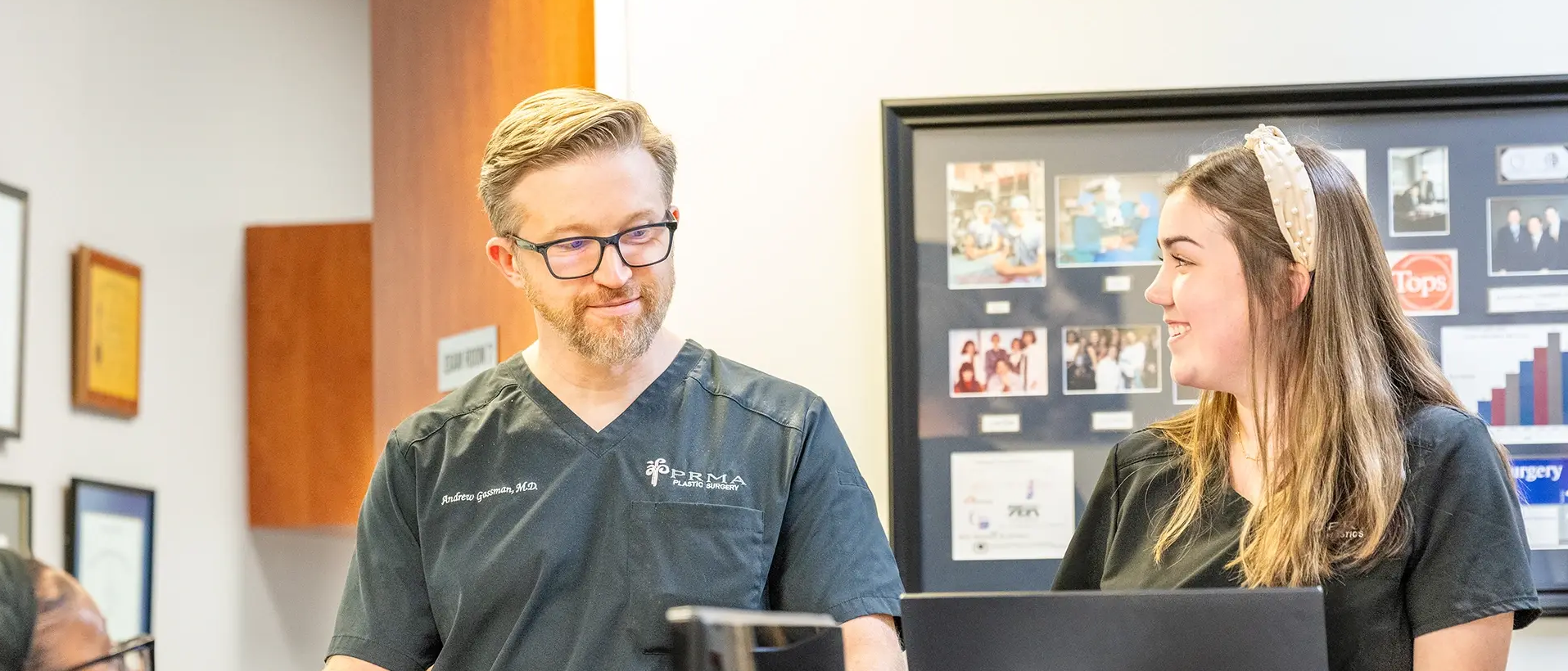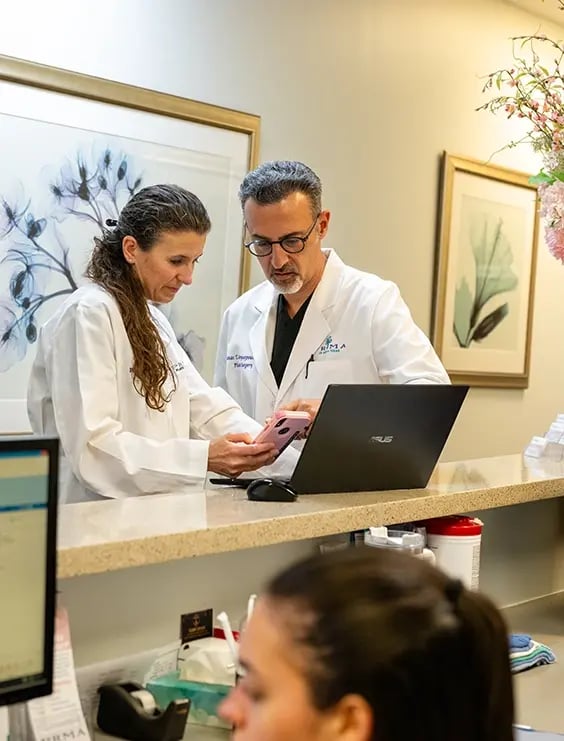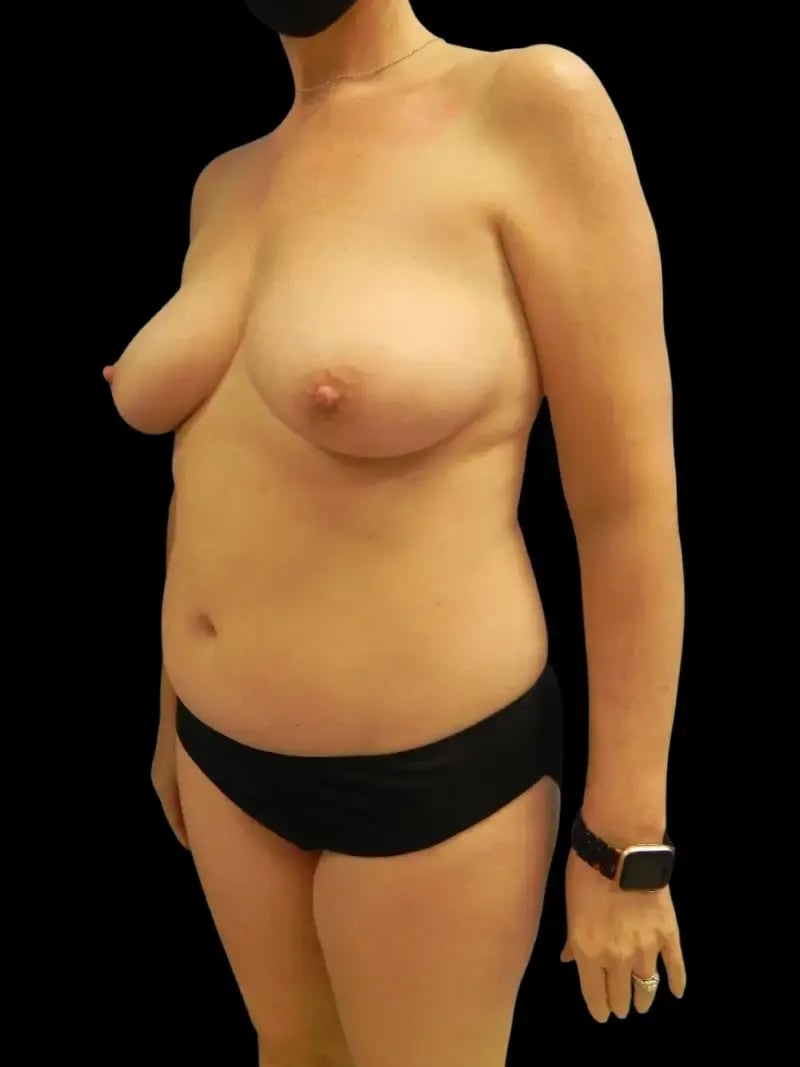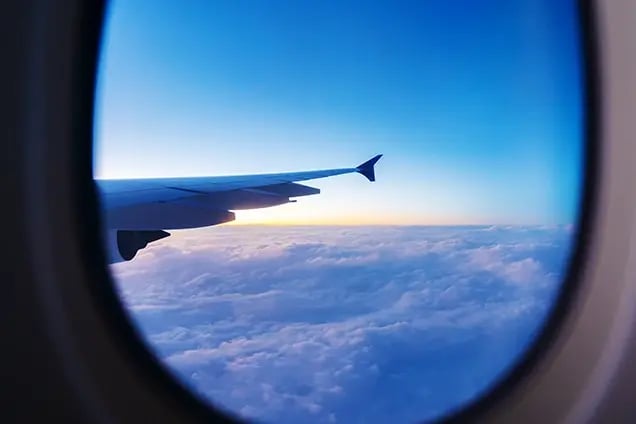
Lymphaticovenous Anastomosis (LVA)
What is Lymphaticovenous Anastomosis?
Lymphovenous Anastomosis (LVA)—also known as “lymph bypass surgery”—is a minimally invasive microsurgical procedure designed to treat lymphedema by improving lymphatic drainage. Using microsurgical techniques, surgeons reroute excess lymphatic fluid into the body’s venous system. By connecting tiny lymphatic vessels (which carry fluid) directly to small veins (which drain it), LVA helps reduce swelling and prevent fluid buildup. This advanced technique is most effective when performed early in the course of lymphedema and can dramatically improve both quality of life and limb appearance.
Key Information
Same-day surgery: No hospital stay—go home the same day.
Eases swelling and heaviness: Improves circulation and reduces fluid buildup.
May reduce need for therapy: Can lessen reliance on compression over time.
No drains needed: Low risk, minimal recovery.
Dual-surgeon precision: Performed by two expert microsurgeons at PRMA.
Can be combined: Works alongside lymph node transfer for added benefit.
Insurance-friendly: Often covered—our team helps with approvals.
Quality of life boost: Helps patients feel more comfortable and confident.
What to Expect During Surgery
Lymphovenous Anastomosis is a delicate outpatient surgery that uses microsurgical techniques to create new drainage routes for lymphatic fluid. During surgery, your PRMA microsurgeons use specialized microscopes to locate tiny, functioning lymphatic vessels—sometimes less than 0.5 millimeters in diameter. Once identified, these lymphatic channels are carefully connected, or “anastomosed,” to equally small nearby veins. This connection forms a lymphaticovenous bypass, allowing fluid that would normally get trapped to flow directly into the venous system and circulate out of the body naturally.
Several bypasses are usually performed in one procedure, depending on the severity and location of your symptoms. The surgery involves only small 1–2 cm incisions, typically placed near the wrist, forearm, ankle, or calf. Because the technique is so precise and minimally invasive, LVA does not require surgical drains, and most patients return home the same day. At PRMA, every procedure is performed by two board-certified microsurgeons working in tandem—ensuring maximum accuracy, efficiency, and safety throughout the process.

Before & After








Recovery Timeline
-
Week 1:Mild swelling and bruising near the incision sites are common. You’ll be encouraged to elevate the affected limb and limit strenuous movement. Most patients feel well enough to resume light activities within a few days.
-
Week 2:Swelling typically begins to decrease. You may notice subtle changes in how your limb feels—less heaviness, tightness, or discomfort. Compression garments are usually still worn during this phase to support lymphatic flow.
-
Week 3-4:Continued improvement in symptoms. Many patients report feeling “lighter” in the affected arm or leg. Most can return to normal daily activities, though high-impact exercise should still be avoided unless cleared by your surgeon.
-
Week 5-6:By now, most swelling related to the surgery has resolved. If LVA was effective, limb volume may begin to reduce, and compression needs may start to ease. PRMA may recommend a follow-up visit to assess progress and discuss next steps.
Am I a Candidate for Lymphaticovenous Anastomosis?
Because LVA targets functioning lymphatic vessels, it’s especially beneficial in early-stage lymphedema, before the lymph system becomes too damaged or scarred. For patients with more advanced cases, LVA may be paired with additional techniques like vascularized lymph node transfer for greater benefit. In order to determine whether you are a candidate for an LVA procedure, our team must first perform a diagnostic study called ICG lymphangiography to identify locations of lymphatic flow blockage in the arm that would be circumvented during the LVA procedure.
You may be a candidate for Lymphovenous Anastomosis if:
- Your lymphedema is early-stage (Stage 0–2)
- You’ve had lymph node removal or radiation and now notice swelling
- You’re seeking a minimally invasive option with little downtime
- You’d like to reduce dependence on compression garments or therapy
- You’re motivated to intervene early and protect your long-term function
Find Your Surgeon
Will Insurance Cover Lymphaticovenous Anastomosis?
For more information, visit [Insurance FAQs] in the patient resource center.





